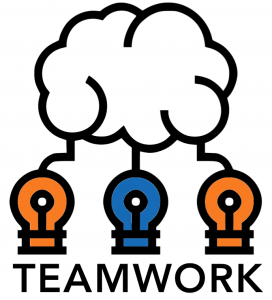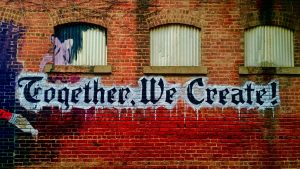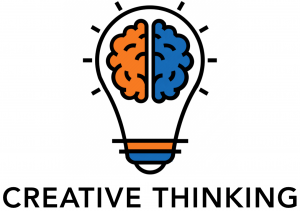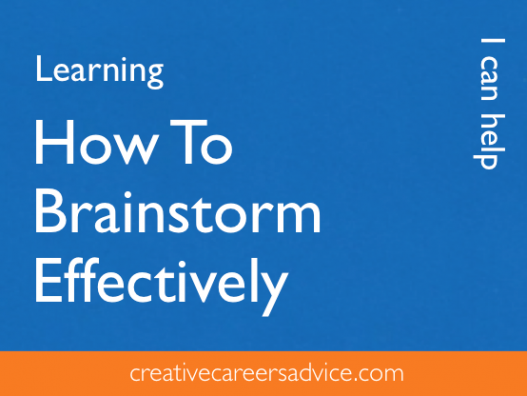Most creative environments you'll be setting your sights on have established well known brainstorming techniques, so it's essential to learn some of the skills to brainstorm effectively.
As a creative you'll be expected to fashion unique and imaginative ideas independently and collectively and that your willing to share them; agencies will hire you for being aware and or developing these skills and clients will expect you to create and deliver them consistently.
Our world places a high premium on ideas but spends little time planning how best to line up our minds to generate them
In this blog we'll be looking at some of the methods & techniques used by creative teams and why this is a good way to work and important skills to have.
To be an effective creative producing workable ideas, you need to be good at solving problems, planning and delivering innovative professional solutions. This is essential whether coming up with ideas individually or together. Brainstorming can be organised to include individual ideation and working together using well-considered techniques will ensure this happens successfully.
But it's not easy producing great original solutions and the challenge of doing so regularly

1. Independent Brainstorming
Not everyone finds it easy or comfortable coming up with ideas in groups, and it's well known individuals are better at divergent thinking independently. Whereas groups whilst good at collective ideation are better at convergent thinking - selecting which ideas are worth pursuing. So brainstorming should reflect and plan their strategies accordingly.
So here's an example of a brainstorming framework using a set of steps to generate individual & collective ideas:

1. Brief the whole brainstorming group, ensuring complete understanding of the requirements and parameters involved.
2. Disperse and start thinking and create ideas individually.
3. Then move to smaller groups to discuss them further, creating ideas into something bigger that then can be collectively brought to the group.
4. Constructive criticism should be given so that the whole group can move on to the best and most creative solutions to the problems at hand.
Nurturing creative thinking is a complex process, but creative agencies understand how valuing individuals within the brainstorming team and nurturing their separate ideas, is
 1. Group Brainstorming
1. Group Brainstorming
Brainstorming is important because no one individual can be the all-time problem solver.
Whilst independent thinking and ideation is essential, in a creative role you'll rarely be coming up with ideas on your own.. even as a freelancer there will be projects and ideas you'll work on within an agency team or the client.
Brainstorming with other like-minded colleagues produces multiple ideas and solutions. It helps grow a creative team's innovation and imagination, encouraging support and working together with a more open mind. Collaborating together people can feel more energised, accomplished, and inspired to progress and develop initial ideas into the next phase.

Multiple creative ideas help solve problems through a collaborative understanding of what's required, sharing the responsibilities and challenges; working in a team collectively to:
- Understand the brief
- Conceive and pitch the ideas
- Plan the project's production and processes and ways to execute and produce them
- Present and deliver the final solution to clients and customers

Brainstorming Techniques
Being familiar with some of the various techniques agencies use in brainstorming prepares you for the creative workplace.
Equal Opportunities It’s generally agreed that the rules of brainstorming, at least in the initial stages, include:
- Everyone having a say
- All ideas being equally valued
- No criticism of other people's ideas is allowed

Content Framing Think about the problem using the following framework
What it is?
Who uses it?
When and where is it used?
Why is it useful - or is it….?
Then you can apply various recognised ideation techniques to the problem at hand, or create your own.

"While brainstorming can be effective, it's important to approach it with an open mind and a spirit of non-judgment." www.mindtools.com
Brain-writing
This is an effective way to produce ideas by simply writing them down anonymously and divided into a series of rounds, were they are then discussed by the group until a final selection takes place.
Some people may just need longer than others to come up with ideas, which can restrict their ability to participate in traditional brainstorming sessions. Brain-writing, ensures team members are on on an equal footing able to contribute at the same time, with anonymous ideas and opinions more guaranteed. It can empower individuals to contribute ideas that might otherwise not be offered up.

“Make space in your mind for dreaming - essential for creative thinking and innovation.”
Include The Weird, Wonderful and Bad Ideas
We all want to create brilliant and the successful ideas. But as a way of stimulating the imagination, sometimes deliberately throwing in the absurd and crazy stuff works in encouraging debate, generating a reaction and even laughter. It serves a key purpose - helping relax and engage the creative team into creating the good and more successful ideas.
What to Watch Out For When Brainstorming is:
- Conforming to the will of the group can reduce creative output.
- Assuming others will contribute, so some team members don't work as hard.
- Group behaviour devolves to that of the lowest performing member.
- You’re just about to say something when someone else jumps in.
Action point: XXXX
All photographs in this blog are courtesy of: Unsplash – https://unsplash.com/
© Paul Butler is a Creative Careers Adviser, Design Director and HE Lecturer in employability and Creative Industry careers.
For one-to-one creative careers advice and coaching contact me at: paulb@creativecareersadvice.com
If you found this blog useful share it with your contacts and follow me for more posts on creative careers advice and employability topics.
